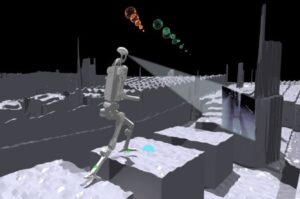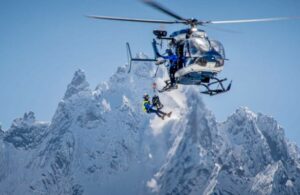In a terrifying development, a Chinese company has unveiled a six-foot-tall robot that can run 17 kilometers per hour — and perform choreographed dances.
Ok, so Unitree’s H1 robot is not quite six feet tall, it’s 5’11”, according to LiveScience. And we haven’t seen it run 17 kph (17.7, to be exact). That’s just how fast its builders say it can go.
But what we do have is enough to induce dystopian sci-fi nightmares in anyone who’s seen Black Mirror S4E5, “Metalhead.”
It’s harrowing enough to watch the faceless machine advance toward an unseen target across a playground at 3.3 meters per second. But wait until they dance. I don’t think I can ever listen to club pop again.
I have a tough time deciphering whether everything we see on screen is real or not. The synchronized dancing (yes, Unitree, that’s what it is — not “whole body dynamic coordination”) skews a little CGI-ey. Also, Unitree, why do their shirts have to look like tactical vests?
To iterate the obvious, I’m unenthused. But maybe I’m turning into a “back in my day” guy. The old Boston Dynamics “Swearing Mod” videos still split my sides.
Should I just get with the program? Maybe humanoid robots aren’t so scary — maybe we will one day decide it is xenophobic to fear them. Maybe they will someday be my friends, climbing partners, or roommates. Maybe I, too, can leave my archaic preferences for the company of humans and animals behind, and join Unitree’s vision for “a new industrial revolution.”
Or maybe I’ll just spend a lot of time running away from robots — and very little getting away.






